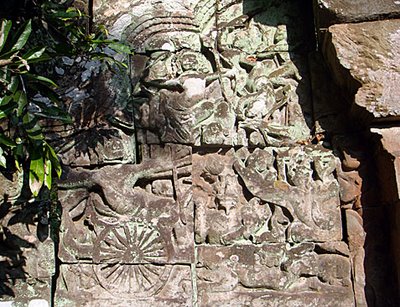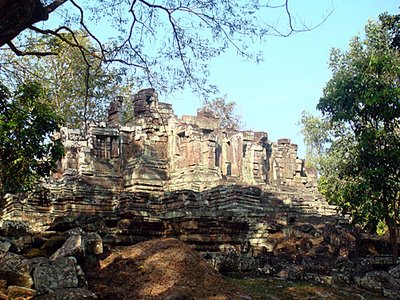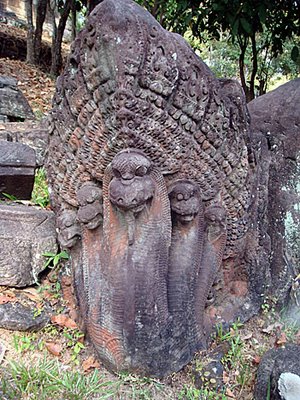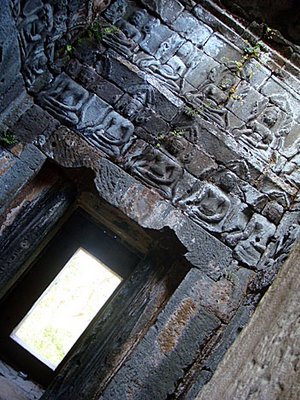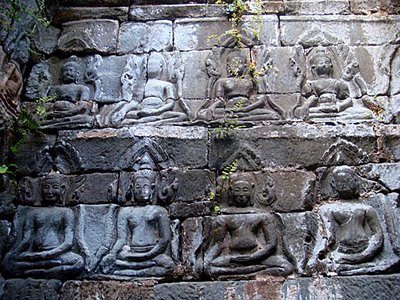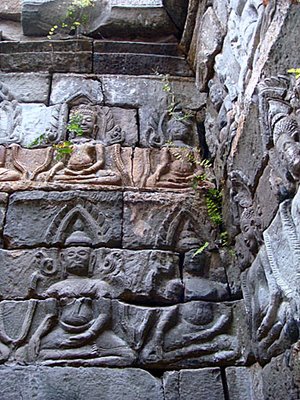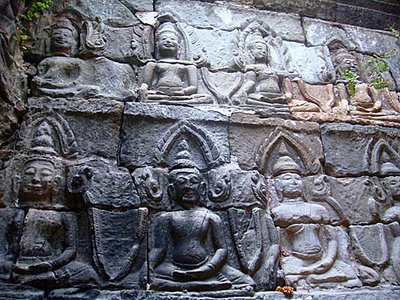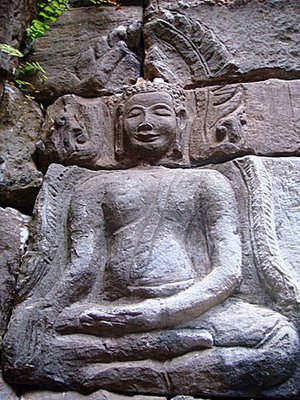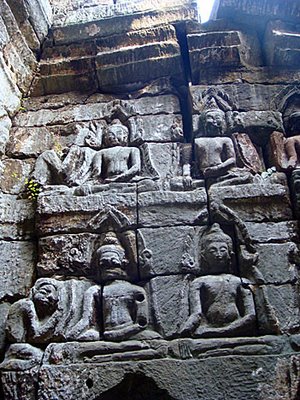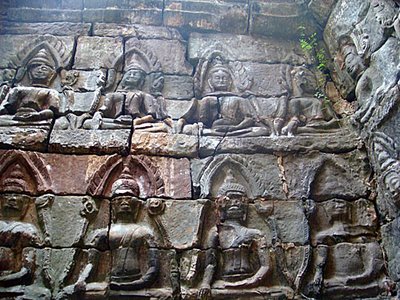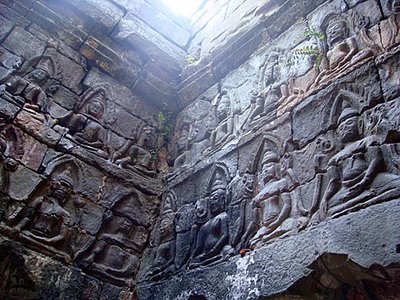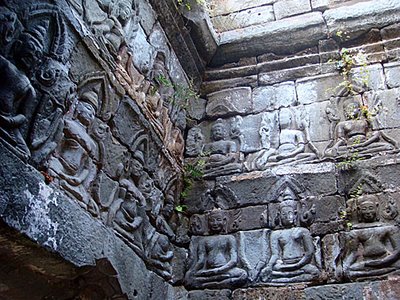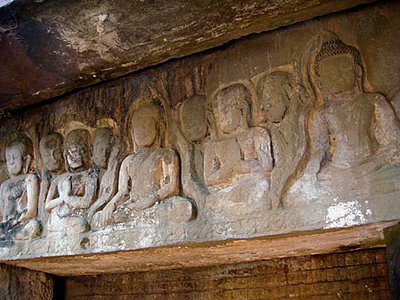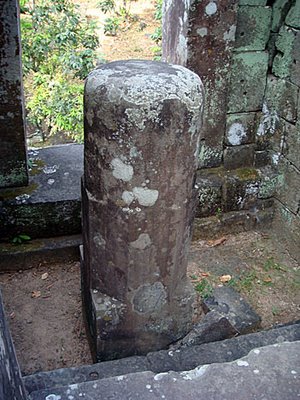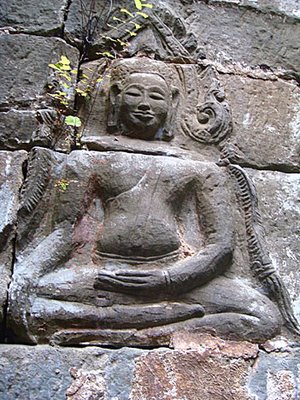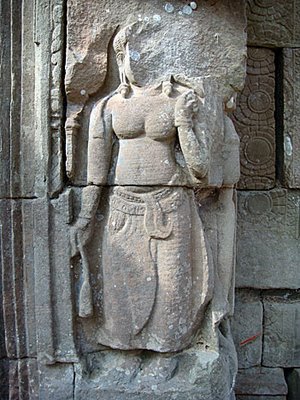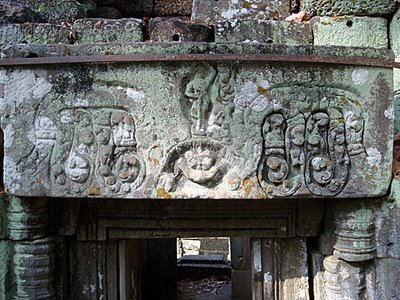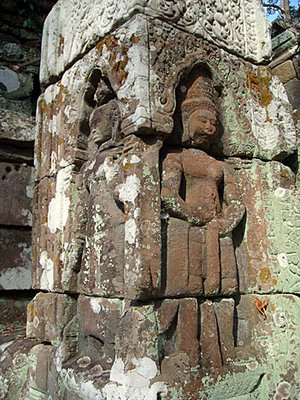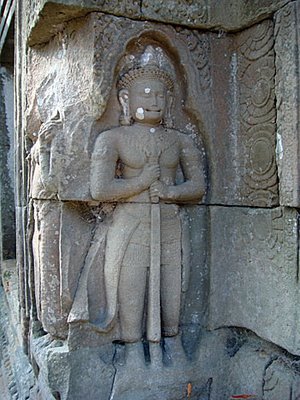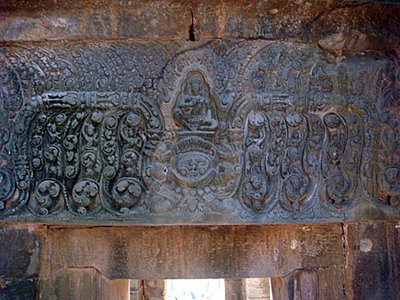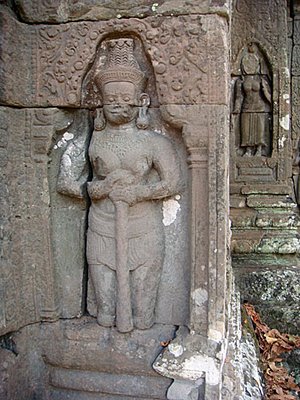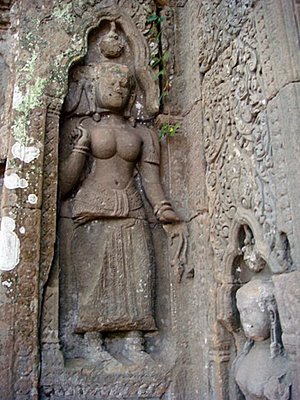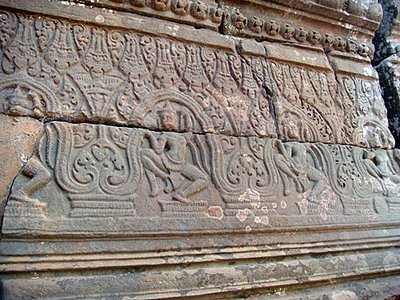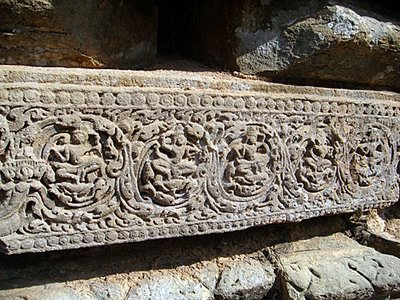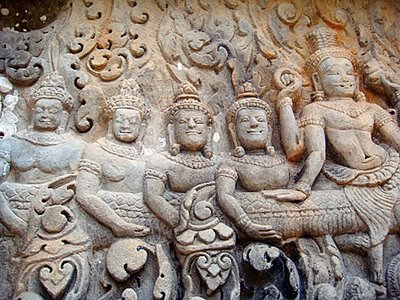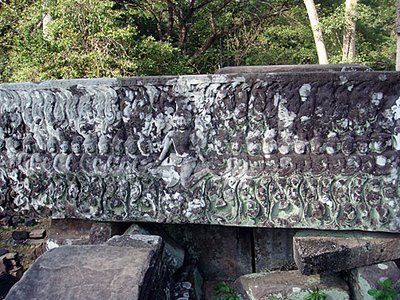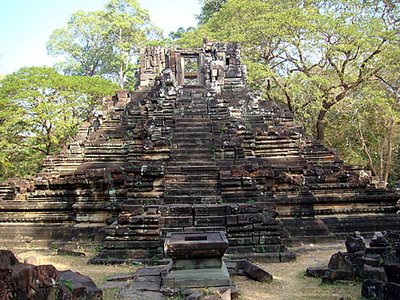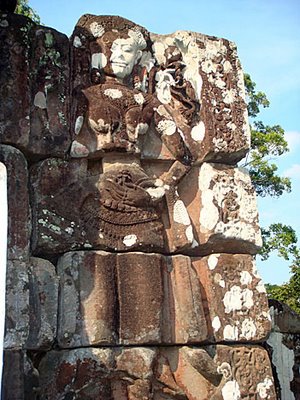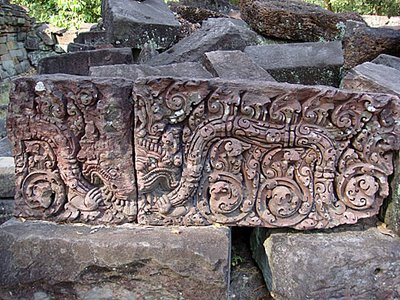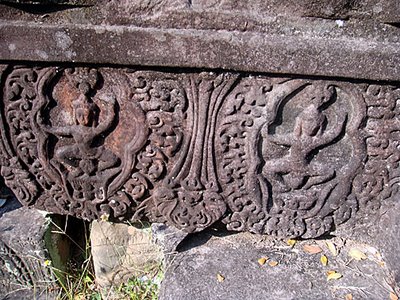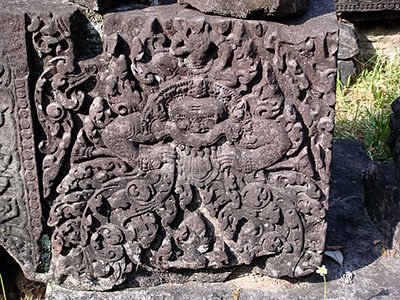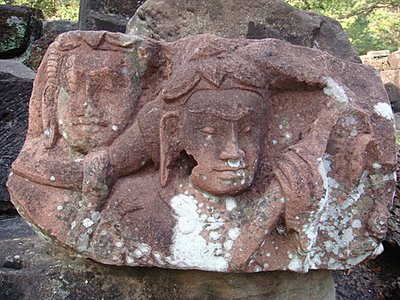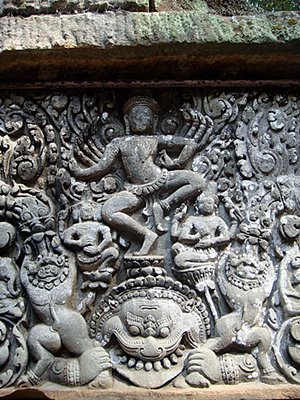 This lively lintel has the multi-armed dancing Shiva, accompanied by Vishnu and Brahma, as well as two lions being devoured by a fiercesome kala
This lively lintel has the multi-armed dancing Shiva, accompanied by Vishnu and Brahma, as well as two lions being devoured by a fiercesome kala
Sat in a quiet corner of Angkor Thom, though they are better known by their letters, the five shrines at Preah Pithu also have numbers designated to them.
Temple U for example is Temple 482, whilst Temple T is 481. Located behind Temple T and surrounded by a moat, Temple U has a wealth of carvings to keep you occupied for half an hour. The sanctuary, on a high base, has male guardian figures, dvarapalas, as well as female devatas in niches at the corners, in varying states of disrepair, as well as three lintels showing three very different stories. There's the Churning of the Sea of Milk, there's a lively scene of a dancing Shiva, Vishnu and Brahma trio on top of a kala head and an unfinished lintel that might be Krishna lifting Mount Govardhana above a grinning kala. As I stood at the top of Temple U I noticed a couple of Apsara guards amongst the trees surrounding the temple, enjoying a crafty cigarette, the first people I'd seen since I entered the complex.
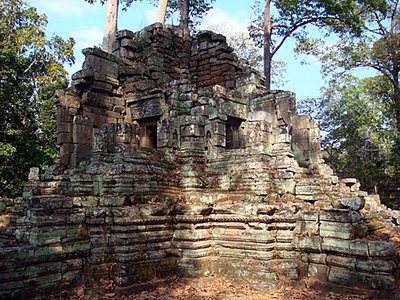 Temple U in shade taken from the southeast corner
Temple U in shade taken from the southeast corner
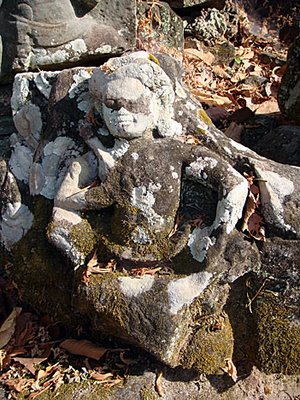 A broken fragment of a god lying on the ground
A broken fragment of a god lying on the ground
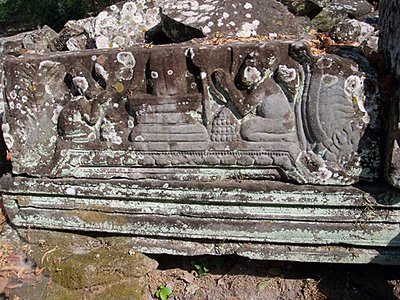 Two worshippers pay their respects to a re-designed linga on a plinth
Two worshippers pay their respects to a re-designed linga on a plinth
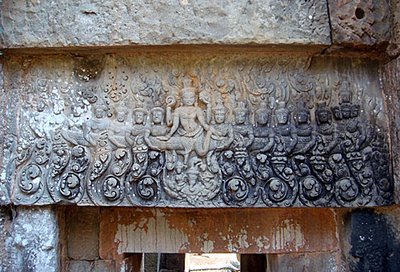 The Churning of the Sea of Milk lintel facing north
The Churning of the Sea of Milk lintel facing north
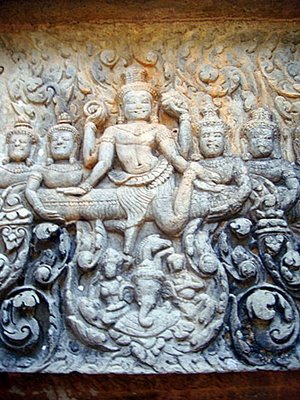 Vishnu is the central character here, sitting on the giant naga being pulled by gods (left) and demons (right). Below Vishnu a tiny elephant and a horse are featured.
Vishnu is the central character here, sitting on the giant naga being pulled by gods (left) and demons (right). Below Vishnu a tiny elephant and a horse are featured.
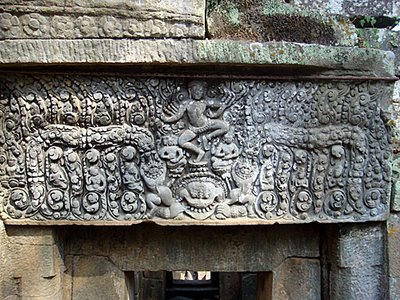 The full Shiva dancing lintel in situ on the west side, a lively central theme then a more sedate floral pattern towards the ends
The full Shiva dancing lintel in situ on the west side, a lively central theme then a more sedate floral pattern towards the ends
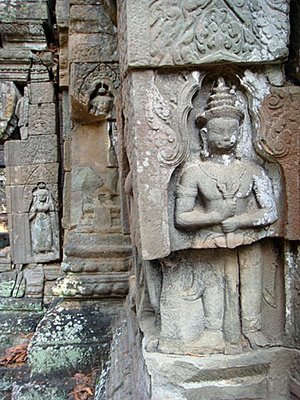 On the right is a dvarapala guardian and behind are two devatas, one of which has been unsuccessfully hacked away by thieves
On the right is a dvarapala guardian and behind are two devatas, one of which has been unsuccessfully hacked away by thieves
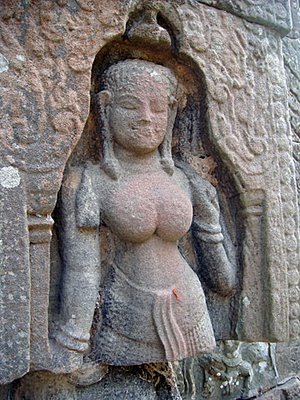 This voluptuous devata is incomplete, as her lower half is missing
This voluptuous devata is incomplete, as her lower half is missingLabels: Angkor Thom, Preah Pithu
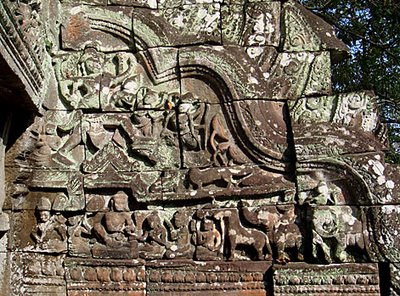 This is definitely Vishnu taking three strides across the world, with an orderly court scene below, in an unusual half pediment at Temple Y (#485)
This is definitely Vishnu taking three strides across the world, with an orderly court scene below, in an unusual half pediment at Temple Y (#485)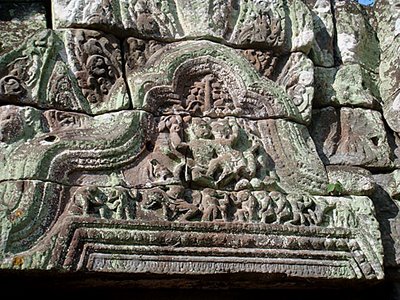 The pale green lichen and time has weathered this pediment so I can't identify its message (at Temple Y). I feel like a failure.
The pale green lichen and time has weathered this pediment so I can't identify its message (at Temple Y). I feel like a failure.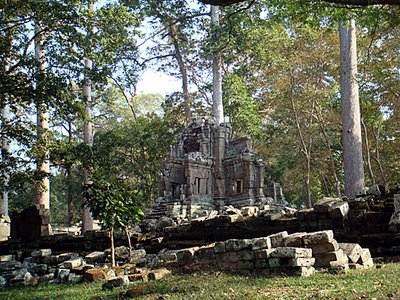 The trees provide a background for Temple X, and a good example of the stone blocks strewn over the ground
The trees provide a background for Temple X, and a good example of the stone blocks strewn over the ground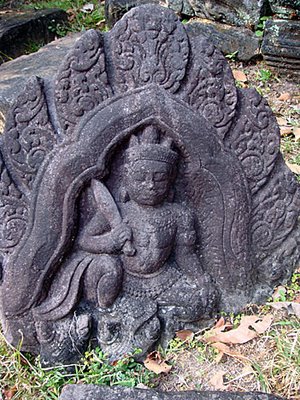 I can't be sure but this looks like a carving of my favourite minor god, Vishvakarma, usually seen on lintels, sat above a grinning kala. This is the guy who created the universe, so why they call him a minor god I'm not so sure. He's up there with the best of them in my book.
I can't be sure but this looks like a carving of my favourite minor god, Vishvakarma, usually seen on lintels, sat above a grinning kala. This is the guy who created the universe, so why they call him a minor god I'm not so sure. He's up there with the best of them in my book.